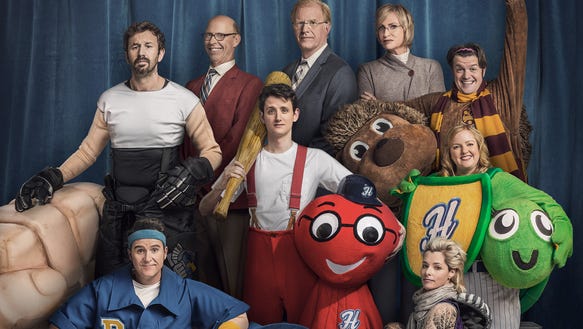Amy Adams stars as a grieving mother who embarks on a
personal journey to connect with her past by ensuring the safety of our future,
as she helps our government make first contact with an intelligent alien
species. Over the last few years the awards season has spawned a new genre, and this high-brow science fiction release echoes the emotional timbres of
Christopher Nolan’s “Interstellar” as well as Alfonso Cuaron’s “Gravity,” along
with the pro-science message of Ridley Scott’s “The Martian.” Space
exploration and a thirst to better understand our place in the universe has
been reflected in these high-budget, philosophically-minded genre films, and in
that regard, Denis Villeneuve’s “Arrival” reaches for headier themes, heavier
emotions and leaves a larger gap for the audience to meet its challenging narrative
structure.
After twelve massive, bean-shaped vessels arrive at
seemingly random locations on our globe, Adams’ Dr. Louise Banks, a scholar of linguistics,
is recruited by Colonel Weber (Forrest Whitaker) to make sense of the aliens’ vocalizations.
After joining the effort, she meets mathematician Ian Donnelly (Jeremy Renner),
who notices patterns in the otherworldly scribe they photograph while trying to
talk with the beings through a translucent barrier deep within their ship. While
the American team is making slow progress, other world governments are less
cautious about enacting a preemptive strike against their new visitors, making it
all the more imperative for Dr. Banks and her staff to decipher the aliens’ exact
purpose for landing.
It’s hard not admire Villeneuve’s ambition here, as this
picture aims to weave structure with emotional storytelling, with the
intentions of being a broad science-fiction and a character piece at the same
time. The movie also wishes to work as a social allegory about the state of our
international relations and how an event such as a global alien arrival could
easily activate simmering political tensions around the globe.
Under the visual and
tonal guidance of Villeneuve, the screenplay’s tricky flashback/flash-forward mechanics
doesn’t overwhelm the themes or the emotional core of the film, though Adam’s portrayal
as the multi-layered and complicated lead is at times coldly beholden to
mystery of her character.
The film’s many storytelling goals prevents Adams from revealing
too much about her interior state through her performance, which creates an
impressionistic take on the character that doesn’t always gel with the film’s pulpier
leanings. After we are given the character’s backstory and we with her in
real-time as she’s interpreting an intergalactic coffee ring alphabet, we want
to be closer to the character when the script keeps pulling her away for the
sake of a clever third-act reveal. Renner works to provide a lighter and more
immediate foil for Adams to exist on screen with, but even he is sometimes
obscured by film’s impressionism.
Villeneuve’s recent crime-thrillers “Prisoners” and last
year’s “Sicario” shared bleak and hopeless views of humanity, while “Arrival”
aims to give us clarity and hope for our future. While the production design
and key set-pieces recall the scale and awe of Stanley Kubrick’s “2001: A Space
Odyssey,” Bradford Young’s tender cinematography evokes the warmth and spiritual
montage of Terrance Malick’s later work, marrying the cerebral and instinctual
cinema of both directors. The script’s gotchya revelations eventually pay off
and once the film’s many flashbacks are informed by the twist, the movie’s complex
structure blends quite nicely into a much-needed message of optimism and enlightenment.
Grade: B+
Originally Published in the Idaho State Journal/Nov-2016
Listen to this week's episode of Jabber and the Drone to hear more conversation about "Arrival."
Listen to this week's episode of Jabber and the Drone to hear more conversation about "Arrival."






